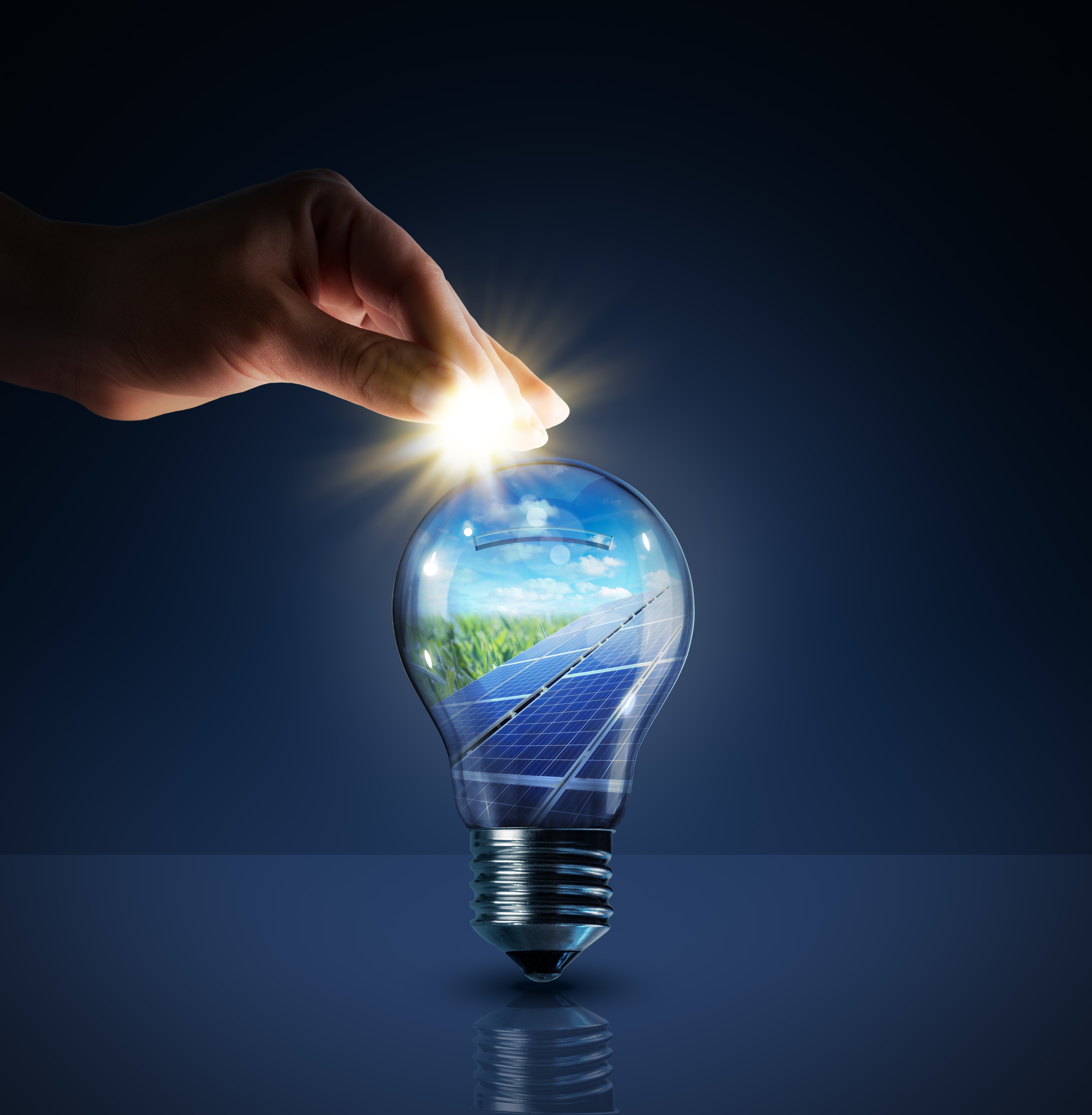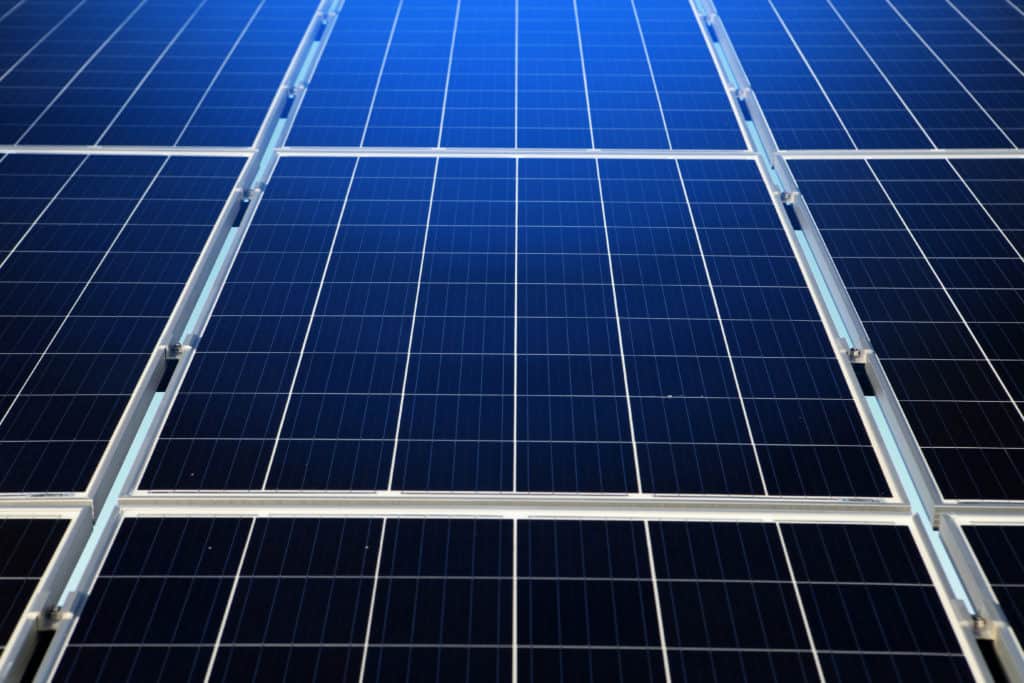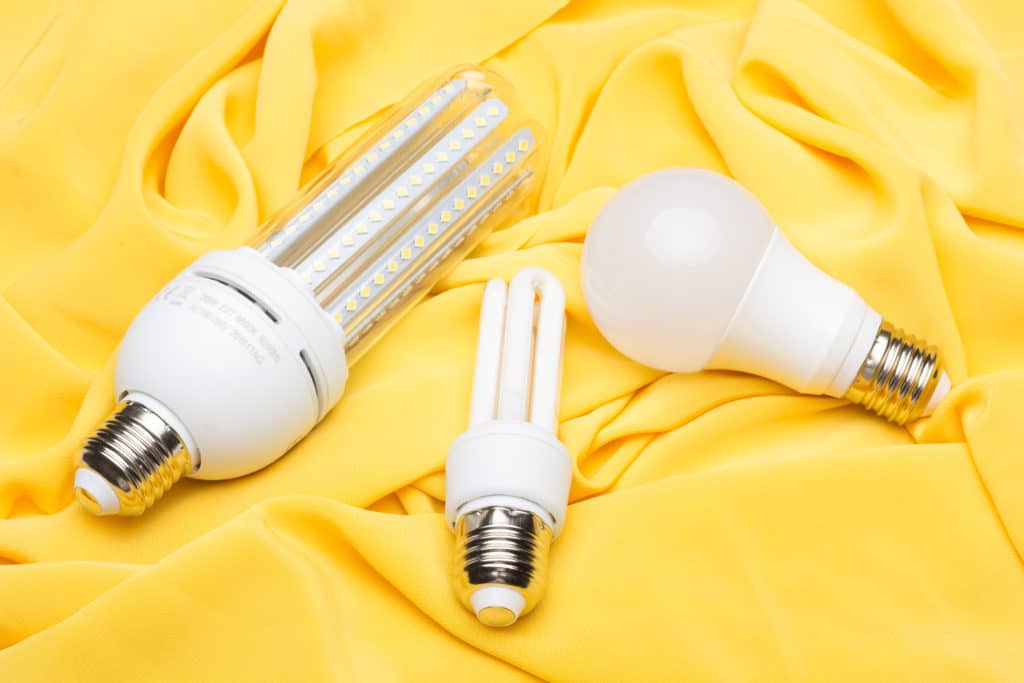
A cloudy day, or a night that seems to go on forever will stop the creation of needed energy from your solar panel. When the sun is not around, but you still need a working solar panel, artificial light is the next option that pops into your mind
Solar panels can absorb light from artificial sources, though it will never charge the solar cells as well as from direct sunlight, which results in less energy. If they are used, they need to be powerful lights that will make use of the solar panel worthwhile.
There is a logical reason why solar panels work best with direct sunlight, as it contributes to the overall energy they are creating to power your home and other buildings. It is important that we understand the different types of artificial light while also understanding how light and solar panels work together to produce energy.
Types of Artificial Light
There are different types of artificial light: incandescent light, florescent light, and LED light. Each of these are placed differently on the light spectrum, and therefore cause different amounts of energy output when used with a solar panel.
Ben Minnaert and Peter Veelaert from the Ghent University preformed an experiment to determine if artificial light works and at what levels. “Amazingly, they found that it was indeed possible to harness electricity from artificial light through solar panels. However, efficiency values were nowhere close to what would be expected in outdoor daylight conditions” Source.
The above mentioned people also found that the highest-energy producing source of artificial light was incandescent. Regardless though, any artificial light used to create power is deemed as not worth it because it is not as effective as direct sunlight.
“On a typical summer day, the sun produces around 1000 watts of solar energy per square meter. LED bulbs, whereas, typically have a wattage between 5 – 15W, and emit between 300 – 500 lumens” Source. LED lights therefore, also can be used to charge solar panels, as they follow the same light pattern as the sun and as incandescent lights, but it will take much more time and is much less effective.
Types of Solar Panels

Today, there are three common types of solar panels available. Generally all solar panels fit into one of these three category monocrystalline, polycrystalline, and thin-film. Monocrystalline and Polycrystalline are both very similar. “Monocrystalline and polycrystalline panels vary in the composition of the silicon itself. Monocrystalline solar cells are cut from a single, pure crystal of silicon. Alternatively, polycrystalline solar cells are composed of fragments of silicon crystals that are melted together in a mold before being cut into wafers” Source. Monocrystalline solar panels are recognizable by small black cells pieced together to make up the solar panels, and generally look black to people. Polycrystalline solar panels look more blue to people and are more grid-like than cell-like.
There are a variety of different types of thin-film solar panels like cadmium telluride, amorphous silicon, and Copper Indium Gallium Selenid. Each of these uses different materials other than solid silicon to conduct energy. Thin-flim solar panels are most easily recognized by there thinness. They are much more skinny than other solar panels, but vary in black and blue colors depending on what they are made of.
There are many advantages and disadvantages to each of these different solar panels.
- Monocrystalline Solar panels have very high efficiency and performance and are made very durable, sturdy, and attractive. They look good on your roof! Because of this, they come at much of a higher price, and aren’t incredibly mobile. They have an efficiency rate of 20 percent of higher. They also come with higher wattage modules that help them to collect more energy from the sun much quicker.
- Polycrystalline Solar panels on the other hand have a lower efficiency and lower performance. But they do still get the job done, and come at a lower cost than other solar panels. There efficiency rate is between 15 and 17 percent. They are the same size as most monocrystalline panels, yet are less capable at producing electricity.
- Lastly, Thin-film solar panels also have some great advantages. They are normally much more portable, flexible, and thin. They are lightweight and can be taken with you a variety of places, and produce energy for a variety of things. They also are aesthetically pleasing. Overall though, they also have lower efficiency and lower performance. Depeding upon which thin type of thin-film panel you get, you will be able to produce more or less energy. There effieciency level is normally close to 11 percent.
How Solar Panels Work

Solar panels are great for conducting energy and have become more and more popular and needed in recent years. They are made of a silicon, glass, and negative type material and positive type material that conducts energy. Photons from direct sunlight. “When sunlight hits your skin, the electrons in the atoms of your body vibrate quickly to generate heat. But electrons do something different in silicon. The electrons start moving around. This means that the sun’s energy is conducted into an electrical current, rather than static heat.” Source.
Just as the atoms in our body vibrate to generate heat, the electrons in a solar panel move around to produce energy. Solar panels gather light and heat from the sun through glass, silicon cells and positive and negative beds and then convert that DC (direct current) flow into an AC (alternating current) flow. It does this with use of an inverter box, and afterwards can send that energy to be used in your home or other places.
Solar Panels are made up of two types of semi-conductors which are called N-type and P-type. On top of these semi-conductors is a sheet of glass, and below these two semi-conductors there is a metallic grid to harness the energy and another reflective material on the back.
- “N-type (negative type) material: This material forms the first layer of a solar cell semiconductor and is typically composed of silicon mixed with trace amounts of phosphorus. This causes the silicon to carry a negative charge.
- P-type (positive type) material: The second layer of semi-conductive material in the solar
cell is positively charged, and typically consists of silicon mixed with trace amounts of the element boron” Source.
“One concept that is worth considering regarding this matter between solar panels and artificial light is a fundamental law of physics. Whenever energy is changed from one form to another, what results is a net loss. It is highly recommended that you just stick with sunlight to power your solar panels” Source.
How to Still Generate Energy with Artificial Light
Lets say you’ve got a solar powered flashlight that’s completely dead. You need it tomorrow before the sun even comes up, but its already eleven and the sun is long gone. Well, it looks like you will have to leave some lights on tonight. If you point the solar cells directly at the light and leave it for awhile, it will help your flashlight to charge, not as quickly as the sun would, but overtime if would help. The highest watt incandescent bulb will do the best job at charger those small things around the house.
Ways to Charge Solar Panels Without Sunlight
There are several ways to charge solar panels without sunlight, and there are also a lot of really good tricks and tips that will help hurry the process of charging it.

- Begin by cleaning the glass of the solar panel. Any dust, debris, or dirt on the solar panel will not allow as much light to reach the solar cells, or make it less potent light. This will help with indoor and outdoor solar panels alike.
- Place your solar panel as close to the light bulb as possible. The closer it is the quicker it will charge and more energy will be conducted more quickly.
- Leave them close to the light to charge for close to 12 hours depending upon the bulb you are using. This will give it plenty of time to become fully charged.
- Use a high wattage light bulb. Incandescent light bulbs vary from 40 to 150 watts. Using a light bulb with closer to 150 watts will charge your solar panel much faster.
- You can also use LED lights to charge solar panel, though they take longer and will need closer to 15 hours of charging time to get a full charge.
- Using mirrors to reflective more light will also aid in the charge of the solar panel. Mirrors help to redirect the light directly into the solar cells.
- It will also be helpful when using a solar powered light to turn out the light while the solar panel is charging. Doing this for 72 hours will help it charge and keep the charge.
With, or without sunlight, you can charge your solar panel. Overall, the results may vary, and the direct sunlight will always win, but when in a pinch artificial light can be there to help you out. Use incandescent, LED or other bulbs to fuel your solar cells!